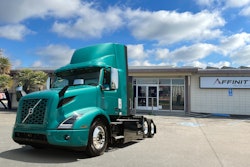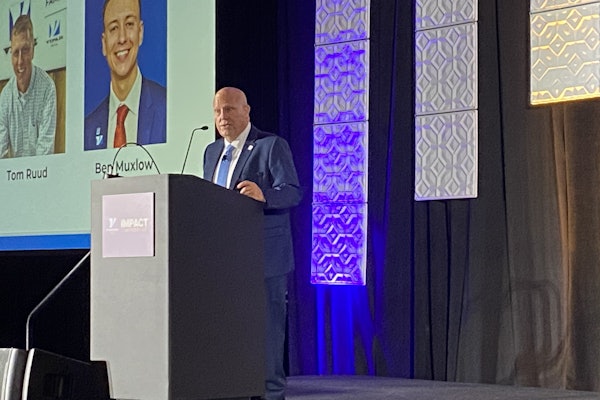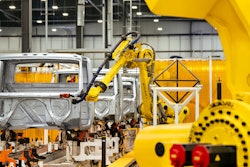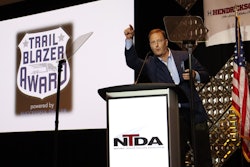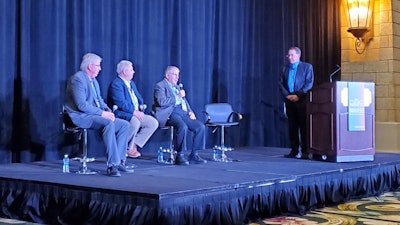
With a jammed-up supply chain and the resulting parts shortage around the heavy-duty trucking industry, a distributor, supplier and remanufacturer weighed in on how best to weather the storm.
The discussion was part of the session, “What are Parts Suppliers Doing to Help Reduce the Impact of Cost Increases and Supply Pressures,” held during Service Opportunity Learning Days (SOLD) on Wednesday at Heavy Duty Aftermarket Week (HDAW) in Grapevine, Texas. The session was moderated by Mike Betts, CEO and chairman, Betts Company.
As Tampa Spring Co. began noticing kinks in its supply chain, President John Messina Jr. said the company gathered its managers to form an ad hoc committee to ensure Tampa Spring had product in all its stores. “We would buy and, in some cases, we would overbuy. At this point we have six months of supplies on hand,” he said.
What helped the company was an inventory management system Tampa Spring began using in 2003. Using the system, Messina said he can change inventory min/maxes within 10 minutes, and it has helped with A and B products, and even C-level products.
“We have increased our inventory over 50 percent, which has led to some interesting conversations with my comptroller, it has worked out very well,” he said. “I’ve had a lot of help from my managers, assistant managers and even down to the mechanics who have been helping us by saying they need this and they need that.”
To ramp up this inventory, Messina said cashflow and room to store the inventory is required.
“Luckily, we have four shops and a warehouse where we’re able to put all this material. Our parts business has actually gotten bigger. Before the pandemic, we were probably 80 percent service and 20 percent parts. We’re now sitting at 60 percent service and 40 percent parts because we put in so many products. Dealers are coming to us; distributors are coming to us; and of course we’re still focused on that end user to come in and buy products. “We do not want to disappoint our customers with our service or our parts.”
Betts asked Messina how suppliers have been helping him out.
[RELATED: HDAW service session shows how trucking can tackle the tech shortage together]
“We had conversations with all of our suppliers at first and we continue to have conversations. Dayton is one of my primary suppliers. But we’ve gone out to the marketplace, and we had to buy from secondary suppliers. We run a backorder report every day. If it’s coming from Dayton and it’s backordered, we’ll go out to the marketplace and get it from someplace else, but I do not cancel the back order from any supplier because you’re going to need it,” Messina stressed.
Walt Sherbourne, vice president, marketing, Dayton Parts, said the company has been doing as much onshoring of products as possible.
“Yes, we did go overseas as a manufacturer for some leaf springs we felt we could get and still have a cost benefit over here in the U.S. and still manufactured heavy springs [here] as we went through this pandemic. It’s easier to manufacturer the heavy stuff in our manufacturing facilities so we started to divert some of our products that were in the light-duty range to suppliers that we vetted offshore,” Sherbourne said.
In manufacturing in the U.S., he said it’s very difficult because a lot of manufacturing is not available. “We really started to look at our supply base and truly understand what we can do here first versus what we still have to offshore because of the lack of manufacturing capabilities. You just can’t find good casting companies, but what we could manufacture here in the U.S., is now manufactured here. We’re trying to get closer to the end user so we can get it to them quicker,” he said.
[RELATED: HDAW session addresses hiring and supply chain difficulties]
“Our procurement team and our logistic team really worked hand in hand with our suppliers because we felt if they knew what our pain was, they could get us the product we needed. We also had to understand what they were going through from a raw materials standpoint,” Sherbourne added.
Another option for companies is remanufactured products.
Joe Kripli, president, Auto Parts Remanufacturing Association (APRA) and the Heavy Duty Reman Group, said, “There’s this huge demand [for parts] and I really feel remanufacturing is a great solution because you as distributors, shops and fleets can use that to your advantage.”
Kripli urged companies to collect cores themselves. “Those cores are yours and I will rebuild them just for you. You control supply [in that way]. The other good thing about remanufacturing is … nobody is casting in the U.S. Every turbocharger has a turbine, housing and compressor that’s casted and with remanufacturing, 90 percent are salvageable and reusable.”
The session also included a prerecorded interview with Betts and Gene Seroka, executive director, Port of Los Angeles, and Tom Gaszi, deputy director and chief of police for the Port of Los Angeles.
“We need to get [products] to our storefronts. The ability to flow all these products is akin to taking 10 lanes of freeway traffic and pushing it into five. There is cargo that is not needed right now. It could be patio furniture, lounge chairs. We need to get parts to factory floors,” said Seroka.
“There is so much to do in the supply chain. It’s not just local, this is a real global issue. We have work to do on American exports and infrastructure development … for the audience here today, the key is bringing certainty back to the supply chain all the way from procurement to transportation to delivery to the customers of this [industry]. And that’s what we’re going to be driving,” he said.
The session concluded with the top eight ways a distributor and service shop business can improve supply chain shortage issues:
- Add more human resources and increase your internal and external communications with your team members and suppliers to ensure your procurement ordering process is as expeditious as possible.
- Do not cancel backorders. Increase supplier communication to ensure you are getting truthful and honest feedback. Ordering extra parts from a secondary supplier will allow the buffer room you may need.
- Adjust your minimum and maximum inventory numbers upward to allow for increased inventory. Also adjust your lead times as some suppliers’ lead times are 12 weeks or more.
- Identify and develop second, third and fourth supply chain partners.
- Increase your top movers to a six-month supply.
- Increase your shop supplies to six months, maybe a year. This includes all required PPE.
- Look into reman partnerships and develop larger core banks that can be remanufactured when needed.
- Look into a new operating system that helps streamline and quicken your ordering cycles and improves inventory management, which allows for quick pricing updates and addresses open backlog issues.





